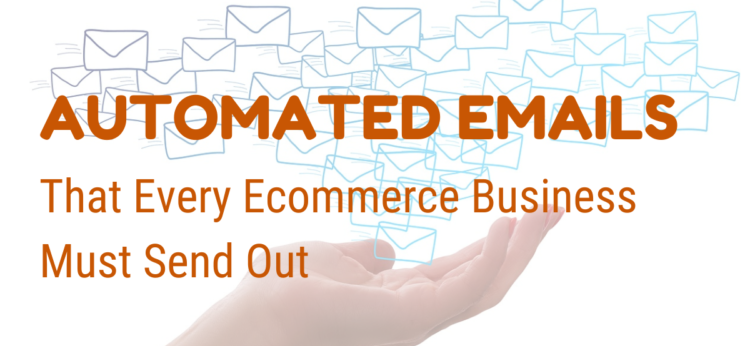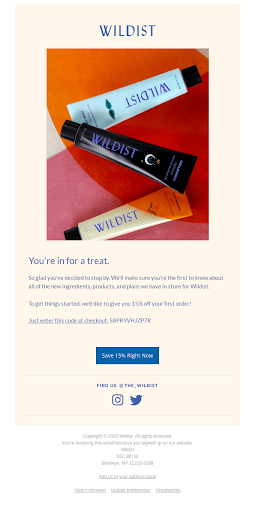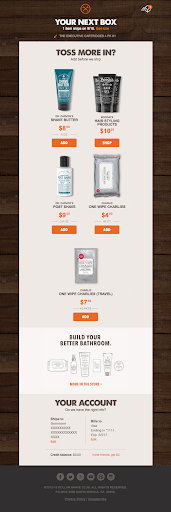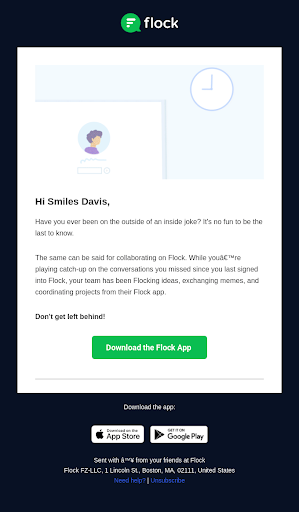The following is a guest post by Kevin George. Kevin is Head of Marketing at Email Uplers, one of the fastest growing custom email design and coding companies, and specializes in crafting professional email templates, PSD to HTML email conversion and free responsive HTML email templates in addition to providing email automation, campaign management, and data integration & migration services. He loves gadgets, bikes, jazz and eats and breathes email marketing. He enjoys sharing his insights and thoughts on email marketing best practices on his blog.
Email marketers absolutely love automation. And well, why shouldn’t they? Among other things, it lets you send your customers the right message at the right time, significantly improves your productivity, enhances the relevancy of your email content, increases customer retention rate, and effortlessly scales your marketing efforts. With the email marketing space being so rife with competition, you must look to embrace automation effectively to be able to cut through the noise. Now, there are various kinds of automated emails out there. For your eCommerce business to leave an indelible mark on your customers’ minds, you must familiarize yourself with them all. And that’s precisely what we aim to help you with through this article. Read on to find out!
Automated Welcome Emails
We are not going to tell you just how important it is to cast the perfect first impression; there’s already plenty of literature surrounding it. Instead, we are here to tell you how you can use welcome emails to go about it.
Welcome emails are the first kind of communication that subscribers receive from you. Hence, the better you curate it, the more your recipients will look forward to your future emails. But, welcome emails are not just about setting the right tone. It is also about capitalizing on the subscribers’ sentiments. You see, when an individual newly opts into your contact list, they eagerly look forward to receiving a welcome email. To that extent, welcome emails register far better opens and click-throughs compared to other marketing emails. So, should your welcome emails manage to hit all the right notes, you’ll be able to tap into this excitement, thereby paving the path for unwavering customer loyalty.
Before you read on - we have various resources that show you exactly how to use social networks to gain massive traffic and leads. For instance, check out the following:
FREE Step-by-Step Twitter Marketing GuideFREE Pinterest Marketing Ebook
Moreover, welcome emails are important for establishing credibility too. After they have filled out your signup or opt-in forms, visitors expect to receive a welcome email as a means of confirmation at the very least. Failing to do so will instantly cast seeds of suspicion in their minds. Now that we understand why welcome emails are important, let us take a look at what goes into crafting an ideal specimen.
- Write a killer subject line. For your subscribers to engage with your welcome emails, they would first need to open them, right? And to make sure of that, you must greet them with an alluring subject line. With the ideal subject line length ranging between 6-8 words, you must make them concise and persuasive in the same beat.
To get your creative juices flowing, take a look at the following welcome email subject lines.
Airbnb- Welcome to Airbnb! Where will you go first?
Food52- Welcome to Food52. Make yourself at home.
OFFICE- You’re signed up, welcome to OFFICE!
Material- A note from our founders (Source)
As you can observe from these examples, the preferred subject line etiquette involves coupling a welcome message with an element that sparks curiosity and creates expectations in the readers’ minds. - Make sure that the tone of your copy aligns with your brand tone. Remember, in this new media age, your brand identity is no secret to anyone, not even to the ones who don’t interact or engage with you. Even before someone subscribes to your brand for the very first time, they are very likely to have some sort of idea already regarding how you communicate with your customers. Hence, if there’s a visible mismatch between the tone of your welcome email and overall brand image, new subscribers will be left increasingly disoriented. If you are someone who’s known to communicate their messages, insights, and announcements in a brief and formal language, stick to it while drafting your welcome email copy as well. Likewise, if your regular communication involves heavy usage of Gen Z and social media lingo, then, by all means, reflect the same in your welcome series too.
To help you better understand what we are talking about, let us take up the case of Pit Viper.
This is what their landing page looks like. Note the brand voice.

Upon filling out their opt-in form, this is the welcome email you receive.
 And this is how some of their subsequent communication looks like.
And this is how some of their subsequent communication looks like.

See how consistent they are with their tone? When the voice of your emails lines up with that of your brand, shaping customer expectations becomes a breeze. - Don’t say too many things. The best approach to writing a welcome email is to keep it as simple as possible. Confirm the user’s action (filling up the opt-in/signup form), convey your gratitude, and request them to whitelist you. That’s about it. Steer clear from adopting an overly self-promotional approach. Keep in mind that the welcome email is primarily about the customer.
Take a look at Equal Parts’ welcome email for instance.

- Keep your word. What did you promise the visitor in your signup form? Free shipping for the first 5 orders? 10% off discount coupon? Free ebook? A referral code? Whatever it might be, ensure that you deliver the same in your welcome email. Nothing disenchants a subscriber more than a brand that fails to respect its promises.
- Give your subscribers something to do. Apart from greeting the customer, welcome emails should also be used to foster a dialogue with the subscriber. Now, this can be achieved in multiple ways- ask the readers to engage with you on social media platforms, invite them to read your blogs, urge them to allowlist you, and the like. As we mentioned earlier, a subscriber’s interest level regarding your brand is at its peak during the welcome email phase. Offering them a relevant action is an excellent way of making the most out of it.
- With Apple’s MPP (Mail Privacy Protection) in place, tracking email engagement via open rates is pretty much off the table now. As a result, there is a greater focus these days on framing emails in such a manner that they are able to elicit replies from the subscribers. You can implement the same in your email copy as well. How do you go about it? Pose a few compelling questions to them- what pain points are they looking to address? What are their expectations from your brand? How did they hear about you? This is a smart ploy to invite engagement with welcome emails.
- Give new subscribers a reward- a discount, gift coupon, free shipping for the first few orders, promo code, or just about anything along these lines. After all, what’s a better way of saying thank you than by including a special offer in your welcome email? Not to mention the brownie points such a gesture earns you from your customers.
Wildist’s welcome email perfectly illustrates what we are talking about.

- Attach an opt-out or unsubscribe link. “Well, what’s the point of welcoming new subscribers if I have to show them the way out too?” You see, the experience you deliver through your welcome sequence is not going to impress one and all. And this isn’t necessarily your fault. Sometimes a subscriber’s expectations and a brand’s vision are just plain incompatible. Irrespective of everything, it is a good practice to offer subscribers the choice of opting out right from the get-go. Ask yourself this- is there anything to be gained by trying to communicate with disinterested prospects? No, right? So, what’s the harm in letting them go? Besides, doing so does a whole world of good to your brand reputation.
Automated Abandoned Cart Emails
Abandoned carts are what keep eCommerce business owners up at night. But try as hard as they might to evade them, they are inevitable. That’s why it is extremely vital to set up a watertight cart abandonment email sequence. At present, the average cart abandonment rate across industries stands at a staggering 69.57 %. Therefore, if you don’t chalk out an effective cart abandonment email strategy, recovering lost sales will become immensely difficult.
Wondering what makes a winning abandoned cart email? We discuss the same in the points below.
- Get your timing right. How long should you wait before delivering the first cart abandonment email? 2-3 hours post the abandonment, opine experts. And what if that fails to warrant a response? Should you send another? Yes, but only after a minimum of 24 hours have passed. Not timing your sequence appropriately can paint you as pushy, plummeting your success rates in the process.
- Don’t be shy about offering an incentive. Few things are as potent when it comes to luring customers back. This incentive need not be grand either, just something to capture their attention- monetary discounts, loyalty points, shipping incentives, and the like.
- Use the picture of the abandoned product in the email. A lot of times visitors completely forget about the contents of their abandoned carts after bouncing from a website. Featuring an image of the product in the email, thus, can be a good way to call their attention back to it.
Creating abandoned cart emails can get quite tricky. Here are some examples that will make your bidding easier.
Automated Post-purchase Emails
Want to improve your customer retention rates? Follow up meticulously with your customers after every purchase they make with a neat post-purchase email. This will help you to understand their overall experience with the product and address any issues they might have faced during the checkout process.
Hey, before you read on - we have in various FREE in-depth guides on similar topics that you can download. For this post, check out:
FREE workbook: CREATE AWESOME BLOG POSTSFREE Beginner's Guide: START A BLOG
While designing a post-purchase email, take into account the following factors.
- To increase the email’s appeal, attempt to include a small interactive element. Typically, brands prefer to use the interactive CSS star rating component which allows customers to submit their reviews without leaving the email.
- Once a customer has purchased something from you, you are a lot wiser regarding their interests and preferences, no? Leverage the same to cross-sell similar products in your post-purchase emails.
- To make certain that the customer derives the best possible experience from your product, include essential information such as caring tips, best practices, and relevant FAQs.
The next time you sit down to make a post-purchase email, do go through the following examples.
Re-engagement Emails
Every email list has a few contacts who happen to go dormant all of a sudden. How do you win them back, you ask? By employing a re-engagement email campaign. Keep in mind the following pointers while devising one.
- Don’t start from scratch. Never forget who you are targeting with re-engagement emails- old customers, not new shoppers. Customers who used to actively shop from you in the past but have gone cold of late are your primary demographic for these campaigns. Thus, you must write your copy accordingly. You don’t have to explain to your audience your brand mission, the scope of your offerings, or their salient points all over again. All you need to concentrate on is reviving their purchase intent.
- Execute your re-engagement emails in a planned sequence. Think about it: if a particular contact has been unresponsive for a while, will a single email be enough to get them to pay attention again?
- Remind subscribers why they had fallen in love with your brand in the first place. Thus, make value proposition the defining aspect of your re-engagement emails.
- Added any new offerings since the last time you interacted with your now-dormant contacts? If yes, then make it a point to mention the same in your re-engagement emails. This will push them to regard you in a fresh light.
Here are some stunning re-engagement email examples to inspire you.
Wrapping It Up
If you are an eCommerce business owner, it is rather imperative that you incorporate the above automation workflows into your email marketing efforts. Of course, it might appear a tad overwhelming when you are new to all of this. But trust us, once you get the hang of it, there’s no looking back!













